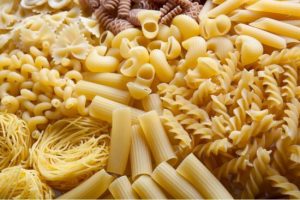
Formulation and Manufacturing Process for the Production of Macaroni
It is universally enjoyed food, and almost every country serves a kind of noodle. As a macaroni In Japan, it is udon; China, mein; Germany, spaetzle. The popularity of macaroni can be assign to several factors: it takes up little storage space, it is easily manufactured, it is easy to cook, and it is rich in compound carbohydrates. It is true that the macaroni have been around for centuries. The vermicelli transparent noodle are made from the macaroni of germinated mung beans and are usually soaked in water before the get boiled or they get fried.
Related Projects: – Food Processing and Agriculture Based Projects
Raw Materials Used in Macaroni Producing:
Macaroni is made from a mixture of water of water and semolina flour. It is a course ground floor from the heart, of durum wheat that is grown specifically for the manufacture of macaroni. With a higher protein content and with a lower starch content than all purpose flours, semolina flour can easily digested. Semolina and farina flour are enrich by B-vitamins and iron before they are shipped to macaroni plants.
Sometimes eggs are added to the mixture for color or richness. According to Federal stipulate that egg noodles contain a minimum of 5.5% egg solid. Such as spinach, vegetable juice, beet, tomato and carrot can also added for taste. In trend, the addition of herbs and spices such as garlic, basil, and thyme has become popular.
Related Books: – Food Processing, Food Industry
The Manufacturing Process of Macaroni
- The semolina is stored in giant silos which can hold up to 150000 pounds 68100 kg. Then pipes move the flour to a mixing machine equipped with rotating blades. Also warm water piped into the mixing machine. The dough should be lumpy consistency.
- Then eggs have to add to the mixture if the product is an egg noodle. If macaroni is to be a flavored variety, vegetable juices are added here. A beet or tomato mixture is added for red macaroni, spanich for green macaroni, and carrot for orange macaroni.
- The, the mixtures have to move to a laminator where it is pressed into sheets with large cylinder. Further, flatter the dough while pressing air bubble and excess water from the dough to reach the optimum water contain of 12% by a vacuum mixer machine.
Related Books: – Food Additives, Food Colors, Colors, Flavours, Flavors, Gums And Stabilizers, Food Industry Ingredients
- Then the roll of dough moves through a steamer that heats the dough to 220F in order to kill any existing bacteria.
- Then depending on the kind of noodle to be produced, the dough is either cut by the dies. Ribbon style macaroni are cut by rotating blades. Then the dough is extruded which then pushes it through metal dies. The size and structure of the holes in the die determine the type of macaroni. Then the dough is pushed by holes between 0.8-0.5 mm in diameter. Cutting machine then cuts the macaroni into length of10 inches and twists it into curls.
- Then the macaroni is placed in a drying tank in which heat, moisture and drying time are strictly regulated. Drying time differ for the different type of macaroni. Macaroni can be range from three hours for elbow macaroni and egg noodles to as much as 12 hours for spaghetti. The time of drying is critical because if the macaroni is dried too quickly it will break and if it is dried too slowly, then the chance for spoilage rises. Oxygen level on the tank is also continued.
- Then fresh macaroni is folded in pre measured amount into clear plastic Then dried macaroni is loaded, the boxes are then sealed with the help of machine.
Related Videos: – Food Processing
For More Details, Click Here:- https://www.niir.org/blog/